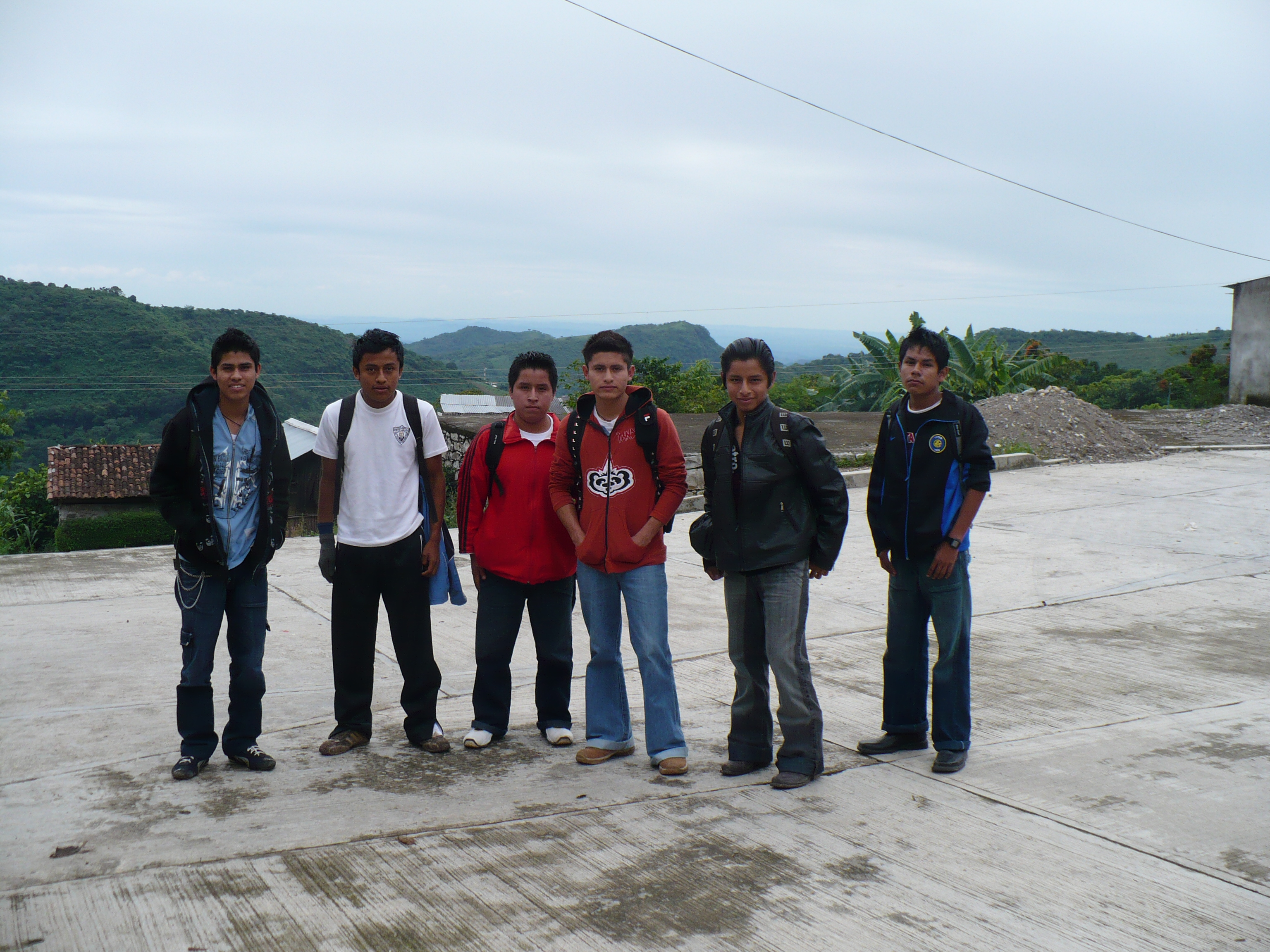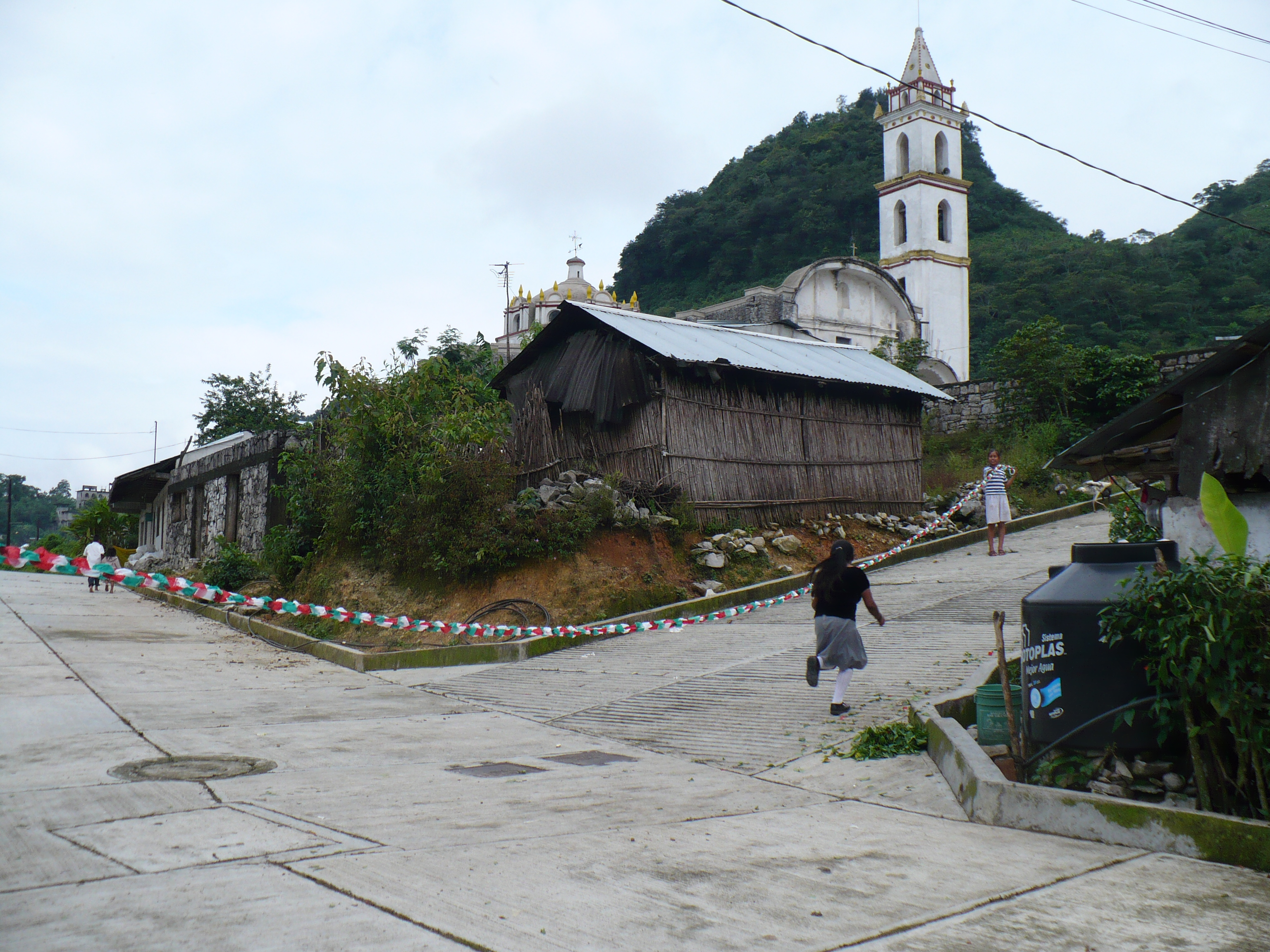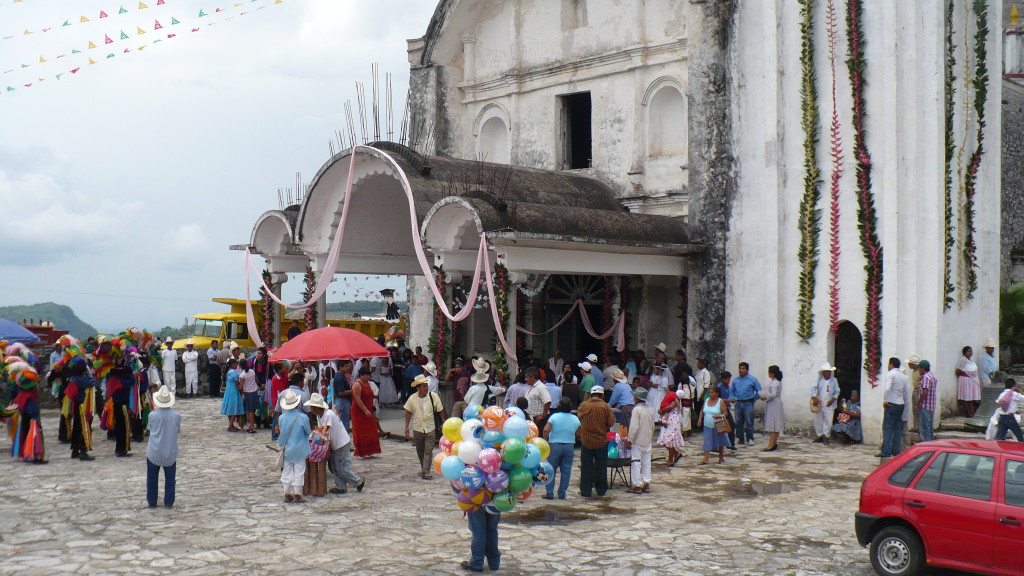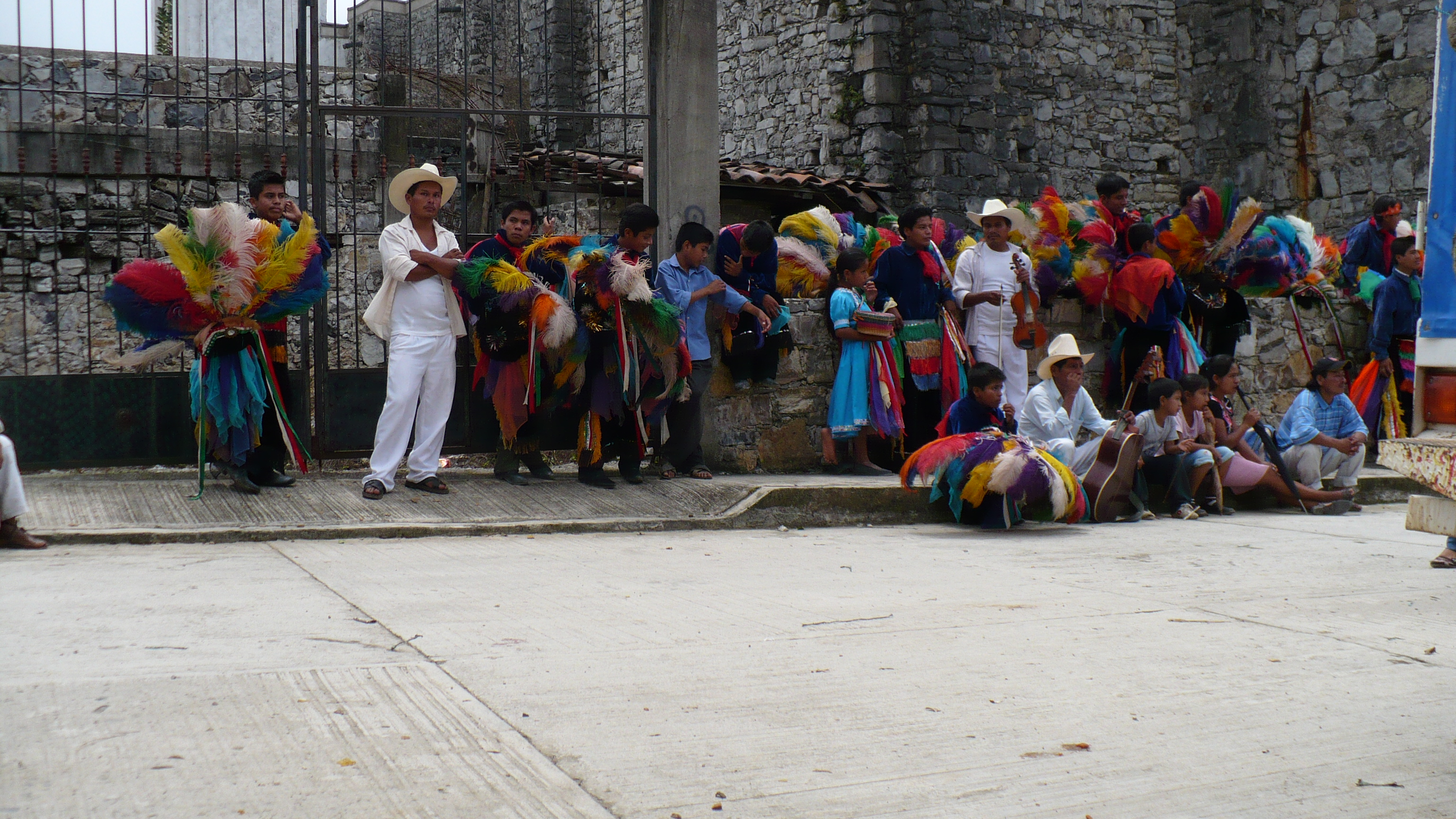While many schools in the Totonac communities claim to be bilingual, none actually have bilingual programs in place. Most teachers are not native Totonac speakers and the absence of resources and language materials makes revitalization efforts even more difficult. While we hope that in the future this webpage may be further developed, we would like to acknowledge those efforts by community members who are genuinely concerned and taking active measure for maintaining their language.
One of few Totonacan language classes are conducted in the San Pedro Tlaolantongo Bachillerato (middle school). These students come from various Totonacan communities and each speak a different Totonacan language. With the instruction and guidance from their professors, here Ángeles Barragán Álvarez, the students have created computer program games to learn Totonacan vocabulary items.
Colegio de estudios científicos y tecnológicos del estado de Puebla, Emsad Tlaolantongo
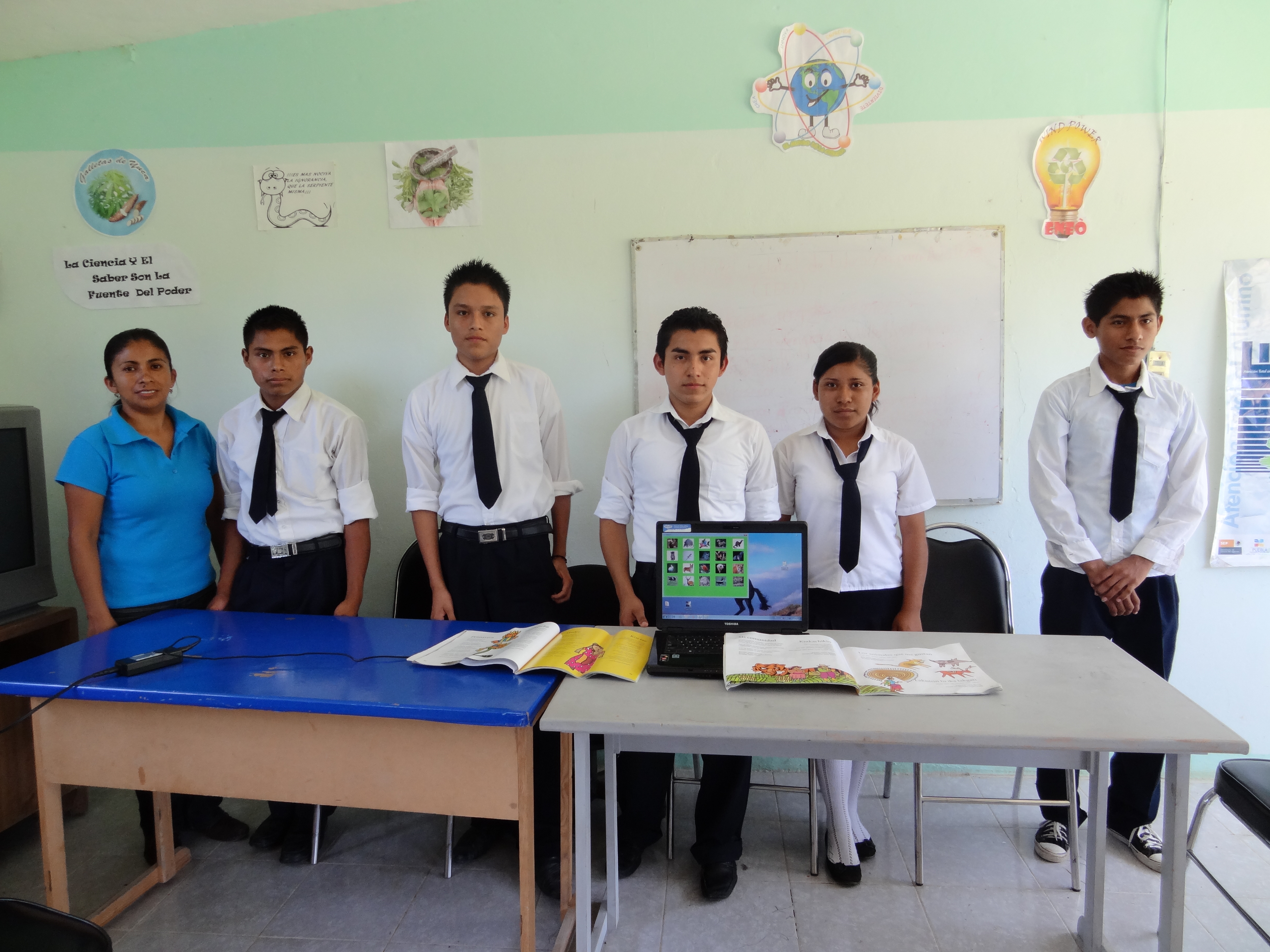
From left to right: Ángeles Barragán Álvarez (teacher and speaker of Upper Necaxa Totonac), Justo Gaona Gómez (Filomeno Mata), Manuel Márquez Cruz (San Pedro Tlaolantongo), Cesar Agustín García Cruz (Jopala), Angélica Aldana Cortés (San Pedro Tlaolantongo), Ceiso Flores León (Tecpatlán).
Other bilingual materials in Totonac and Spanish have been created by community members, like the wonderful children’s books found in the following links:
El conejo que vendía maíz
Canto a las flores
El corazón de la pirámide
Los animales que a mí me gustan
Una escuela diferente
Language Vitality in Other Totonac Communities
In contrast to the communities of Chicontla and Patla, other Totonac communities still enjoy relatively high language vitality. In Ozelonacaxtla, Huehuetla, Puebla, for example, Totonac is still learned in the home, spoken by children amongst themselves during play, and valued for its local meaning as a symbol of membership to the community.
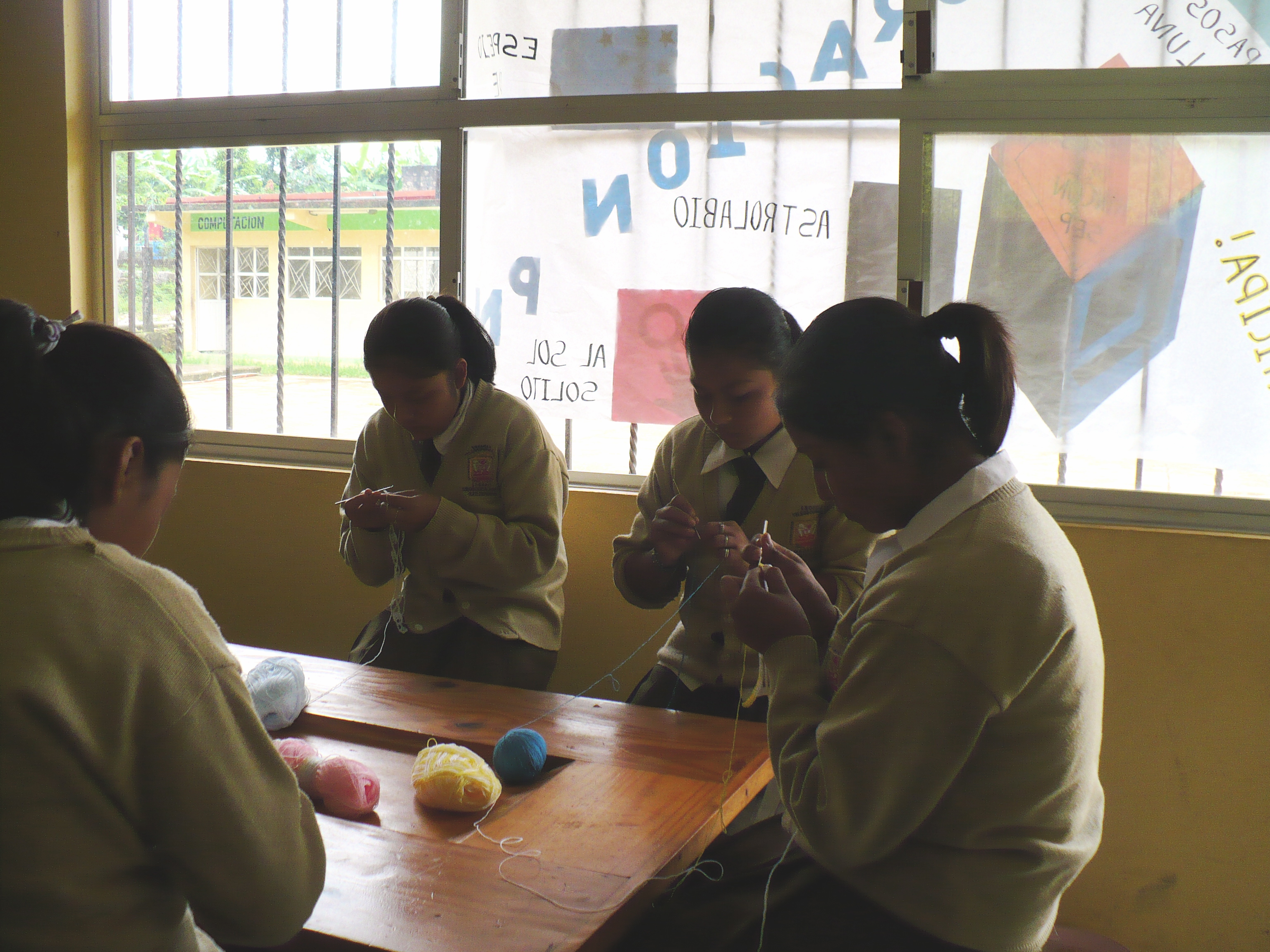
Secondary school girls learn to crochet, weave, and do needle point. Young people address each other in Totonac when they are not in school.
Why is there such contrasts is language maintenance across communities? The answer is entwined in the balance of multiple factors including increased bilingualism, access to Spanish education, economic and political integration with the majority Spanish-speaking population, migration of young people in search of work, and attitudes towards Totonac and Spanish.
The majority of Ozelonacaxtla functions in Totonac across all local domains and there are only a few Spanish-speaking outsiders. Most of the young parents in Ozelonacaxtla speak with their children in Totonac at home, not Spanish. There is a small proportion of bilingual speakers in Ozelonacaxtla who report the same preference for Spanish as in Chicontla and Patla. However, in Ozelonacaxtla this tendency has not spread, remaining restricted to the relatively small bilingual population. Many of these bilingual speakers have lived outside the village for extended periods of time in Puebla or Mexico City.
Overall, Spanish use is restricted to school, church, and with outsiders, institutional domains, and Totonac is the dominant language between all age groups in daily local activities across the community. Totonac is highly valued in Ozelonacaxtla and there has not been a significant shift to the use of Spanish in the home observed in other villages.
“But now he [grandson] goes to school, there he is learning Totonac because his friends, well, they speak Totonac.” (E, woman age 46, June 24, 2008)
“The same in…Totonac, so that his [son] friends will understand him because the other kids, they don’t speak Spanish…and for his grandmother too, so that she understands.” (G, woman age 27, July 8, 2008)
“The [family] always, always speak Totonac. Even the smallest child. When we go there, they give us something, but they never speak in Spanish…A Totonac is never embarrassed of his origins.” (W, male age 28, June 30, 2008)
In contrast, speakers in Chicontla and Patla no longer see Totonac as useful in their daily lives. Totonac is valued as a connection to their heritage, to speak with grandparents, but this has not been enough for maintenance in Chicontla and Patla. The different situations and attitudes towards Totonac affect language use: there is far less Totonac spoken in Chicontla and Patla than in Ozelonacaxtla.



